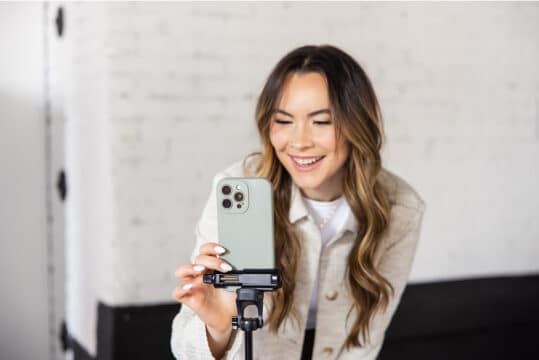What Is Traditional Media? What Is Traditional Media Buying?
So you’re probably wondering… what exactly is traditional media buying? It sounds kind of old and stuffy, but I promise it’s not. Or, at least, it’s not if you do it right.
Traditional media is marketing before digital marketing was a thing. For example, billboards, magazines and other print materials, radio, TV, and so on. Or, as I like to put it, back to the classics. Digital marketing is everything else you might think of: content marketing, emails, pay-per-click, SEO, social media, etc.
Traditional media buying is when a representative for a company manually negotiates prices, making the purchase directly from a salesperson. Or, in other words, the process to set up traditional media marketing for a business.
Typically, traditional media buying is a time commitment and a bit of a process. Without the right connections, you are basically going through the discovery and sales process with each salesperson.
This is why a traditional media buyer professional or traditional media agency usually has connections already in place, so you can press the go-button on campaigns rather than scrambling to find the right person. Cold calling reps isn’t nearly as effective as having those connections already in place.
Is Traditional Media Still Relevant Today?
Now you might be wondering, is traditional media still relevant? And, I’m here to say, yes, traditional media is still in style. The 2019 Edelman Trust Barometer showed that 65% of Americans put their trust in traditional media as a reliable source of news.
Traditional media goes hand-in-hand with digital marketing. At times, it performs even better than digital marketing for certain companies or objectives. Here’s 4 major reasons why:
- Building brand awareness. As we know, brand awareness is huge for a company’s profitability. The more brand awareness you generate, the more trust people have in you. A recent Voxco study found that 59% of consumers prefer to buy from brands they already know. Traditional media mainly supports brand awareness metrics and continues to lead the pack in this area.
- High impact for local audiences. If you are a local-based business, then traditional media can be a great option to raise awareness near you. For example, a restaurant may want to market directly to their city through billboards and radio. But it’s not just local companies that can take advantage. Some larger corporations use traditional media across the country to target a variety of local major markets.
- Less competition. Let’s face it, you’re competing with thousands of others for social media ads, SEO, SEM, and other digital marketing avenues. While there are ways around this, a traditional marketing approach may be the answer for some of your objectives. You can cut through the noise with a dynamic traditional marketing campaign that can catch people’s attention.
- Lower costs for return. A common misconception is digital marketing is less expensive than traditional media. Perhaps if you are looking at basic digital content, but when comparing quality and cost, traditional media tends to come in at a lower price point than digital media. This is especially true if you have the right connections. This helps you get more bang for your buck if your goals are local growth based.
How to Incorporate Traditional Media in Your Marketing Strategy
Not sure where to get started? No worries. I’ve spent twenty years in the traditional media industry, so I know the ins and outs and must-dos. Here’s what I recommend to get you started.
Step 1) Determine your goals.
Are you looking to increase brand awareness? Recover from bad PR? Revenue and sales? Knowing your objectives at the end will help you strategically plan your marketing avenue.
Step 2) Determine your market.
Are you looking or local, national, or both? If your goals are local, traditional media makes sense. For national exposure, you can do a series of localized campaigns throughout the country.
Step 3) Determine if you will pair efforts with digital marketing.
Often, people pit traditional media and digital media against each other, but they actually play off each other quite well.
Step 4) Determine which traditional media types you will use.
Typically, the more the merrier as far as building traction and awareness goes. Normally, I would recommend executing a few different types simultaneously, such as billboards, magazines, radio, and TV.
Step 5) Brainstorm.
Now is the time to get creative and come up with a media launch plan concept. It’s important to have a cohesive campaign so everything works together for a singular purpose. It might be a catchy tagline, or it might be a broader plan, such as raising awareness on a critical industry issue.
Step 6) Media buying.
At this step, you will want to reach out to the different local outlets for billboards, podcasts, print, radio, TV, etc. Be prepared for this to take up a big chunk of your time. This will require extensive research, some back-and-forth and follow-up, and bids from various reps. Unless you hire a professional traditional media buyer or traditional media agency, this process can take at least a month, so plan accordingly.
Step 7) Create content.
Depending on the type of traditional media, you may need to curate content at this point. Some outlets include content creation in the cost, whereas others you will need to either pay or create your own content. If the media outlet is doing the work on your behalf, you will want to collaborate with them and provide resources, such as a brand guide or press kit.
Step 8) Execute.
Now we are at the execution phase. At this point, you are just monitoring the campaign and ensuring everything proceeds as planned. If all goes well, you can kick back, relax, and enjoy the show.
Step 9) End of campaign review.
After the completion of your campaign, it’s time to review what went well and what went wrong. Look at any data you have, as well as traffic and sales during this time period. This review is a good opportunity to prepare for your next media campaign.
Example of a Media Campaign
I’ve been in the middle of the action for countless campaigns. A recent campaign I loved working on was the “Yay! I Pooped Today!” campaign in the Boise area. That’s right… we got down and dirty with your daily doody.
We ran a billboard campaign, supplemented by radio, podcasts, press releases, events, and magazines to raise awareness near us. We also did a big push for digital marketing, with a campaign landing page, social media, ads, and more.
What I loved was the campaign was quirky and eye-catching. It got people to ask questions. It brought a ton of local awareness the company never had before. I met person after person who said, “Oh! You’re the poop company.” We even got a bit of controversy — not everyone appreciated our billboards. But again, that got more people talking about us, including on the local news. From a PR standpoint, it was a smashing success.
What I’ve learned from all my years in media is sometimes you need to be out-there, bold, or intentionally disruptive. Not everyone will love it, but not everyone needs to love it. You’re trying to attract the right people to your brand. And the right people will love it, poop jokes and all.
Media campaigns and traditional media may not always show the impact on data points. But it’s the indirect value — brand awareness, brand loyalty, and website traffic — that can really pay off in the end.
Marketing has evolved so much over the last five years, but traditional media isn’t old news. People haven’t stopped engaging with that kind of content.
If anything, as people are overwhelmed by the amount of digital ads and posts thrown their way, they are craving a change. They want a different way to engage with brands. The Yay! I Pooped Today campaign proved that. All my years in media have proven that.
So, for the haters out there, I’m here to say: Traditional media isn’t dead — and it’s here to stay.
Key Takeaways
- Traditional media is marketing before digital marketing was a thing. For example, billboards, magazines and other print materials, radio, TV, and so on.
- Traditional media buying is when a representative for a company manually negotiates prices, making the purchase directly from a salesperson. Or, in other words, the process to set up traditional media marketing for a business.
- Typically, traditional media buying is a time commitment and a bit of a process. Without the right connections, you are basically going through the discovery and sales process with each salesperson.
- 65% of Americans put their trust in traditional media as a reliable source of news.
- Traditional media builds brand awareness, has a high impact on a local audience, has less competition, and can have lower costs for return.
- There are certain steps to follow when running a media campaign: determine your goal, determine your market, determine if your efforts pair well with digital marketing, brainstorm, media buying, create content, execute, and end of campaign review.
- Marketing has evolved so much over the last five years, but traditional media isn’t old news. People haven’t stopped interacting with that kind of content.







